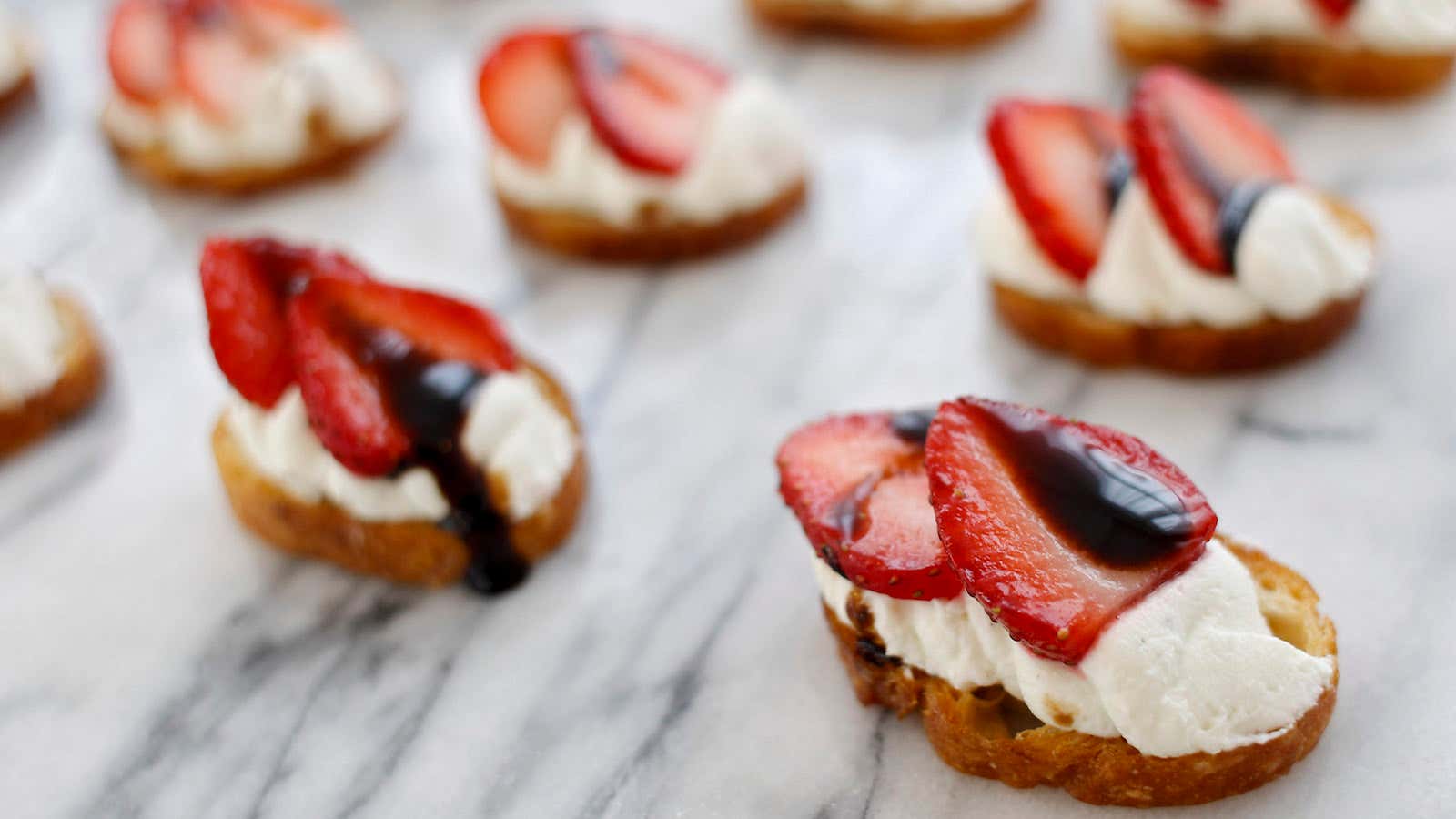Original recipes in a cozy home kitchen, intimate details about family life and domestic bliss—and painstakingly arranged food that oozes sexual overtones. These are the features of a successful food blog.
Often referred to as “food porn,” the trendy phenomenon highlights the seeming contradiction between femininity and feminism while also allowing women to shape the possibilities for women’s identities in online spaces. In contemporary social culture, women are encouraged to be feminists and pursue professional ambitions while still maintaining their femininity and domesticity. Their chief value in society is to reproduce and feed their families while denying their own appetites. These blogs reflect the digital identities of women who have been required to embody multiple contradictions—and look delectable while doing so.
In the food blogosphere, some of these sexualized conventions include the overabundance of “oozing” food, including runny egg yolks that are captured dribbling over neat vegetable beds, chocolate lava cakes with molten centers that drizzle over porcelain plates, and frosted cakes depicted with glazes dripping down their tall sides. There is also something sexually tinged about many food blogs’ penchant for “cheeky peeks,” a photographic motif that peers inside the hidden layers of elaborately decorated cakes. Examples of this include cakes stuffed with candy, desserts whose batter is painstakingly dyed and assembled to reveal ombre and checkerboard patterns when sliced open, and an array of gravity-defying layer cakes.
Pornographic imagery is built upon women offering their bodies to the male gaze, but food porn recognizes and appreciates the creative and technical skills of the woman behind the camera. In this way, food is used as a substitute for the female body; food bloggers offer intimate domestic details from their kitchens, rather than their bedrooms. Food porn can therefore be seen as a way of recognizing the active and creative capacities of women’s bodies rather than the more passive and objectified positions of traditional erotica.
Most food bloggers are women, many of whom are entrepreneurs (or “mompreneurs“) trying to build a strong digital brand. These women trade intimate insights into their home lives in exchange for a chance to build an audience and attract corporate sponsorships that can be monetized. Many of these self-made bloggers ascribe to feminist mantras, but these women also often pin their hopes for business success on faithful representations of traditional femininity.
Ree Drummond, the woman behind food blog The Pioneer Woman, offers one of the most notable examples of how to turn a food blog into a thriving multimedia corporation. She has successfully turned her humble narration of life on an Oklahoma ranch and the hearty “cowboy” and “cowgirl“ food she cooks there into a Food Network television show and collection of cookware sold at Walmart. The New Yorker describes the content of Drummond’s blog as “a gallery of quotidian moments” featuring personal and domestically inclined stories such as “cleaning out her closet, buying an organizer for her jewelry, getting a metal ice-cream scoop stuck to her lip.” Her lucrative empire has been constructed on these simple and self-deprecating stories.
Food bloggers like Drummond often adopt a distinctive and intimate tone despite their vast online audiences. But while the content on food blogs such as Drummond’s is often expressed in a casual and whimsical manner, it is always paired with high-quality food images that are professionally styled and photographed—the antithesis of the homely, modest vibe they project.
Although most food bloggers will not achieve Drummond’s level of visibility and financial success, the ability to profit from the digital performance of somewhat mundane exploits of traditional womanhood—cooking, homemaking, and raising children—motivates many food blogs.
Most readers of food blogs readily take pleasure in the abundance of mouthwatering food porn or in the glimpses into the domestic lives of food bloggers. However, we should also take a moment to recognize the skills it takes to maintain such a presence online and the potential for feminist subversion behind these outwardly indulgent depictions of cooking and consumption.
